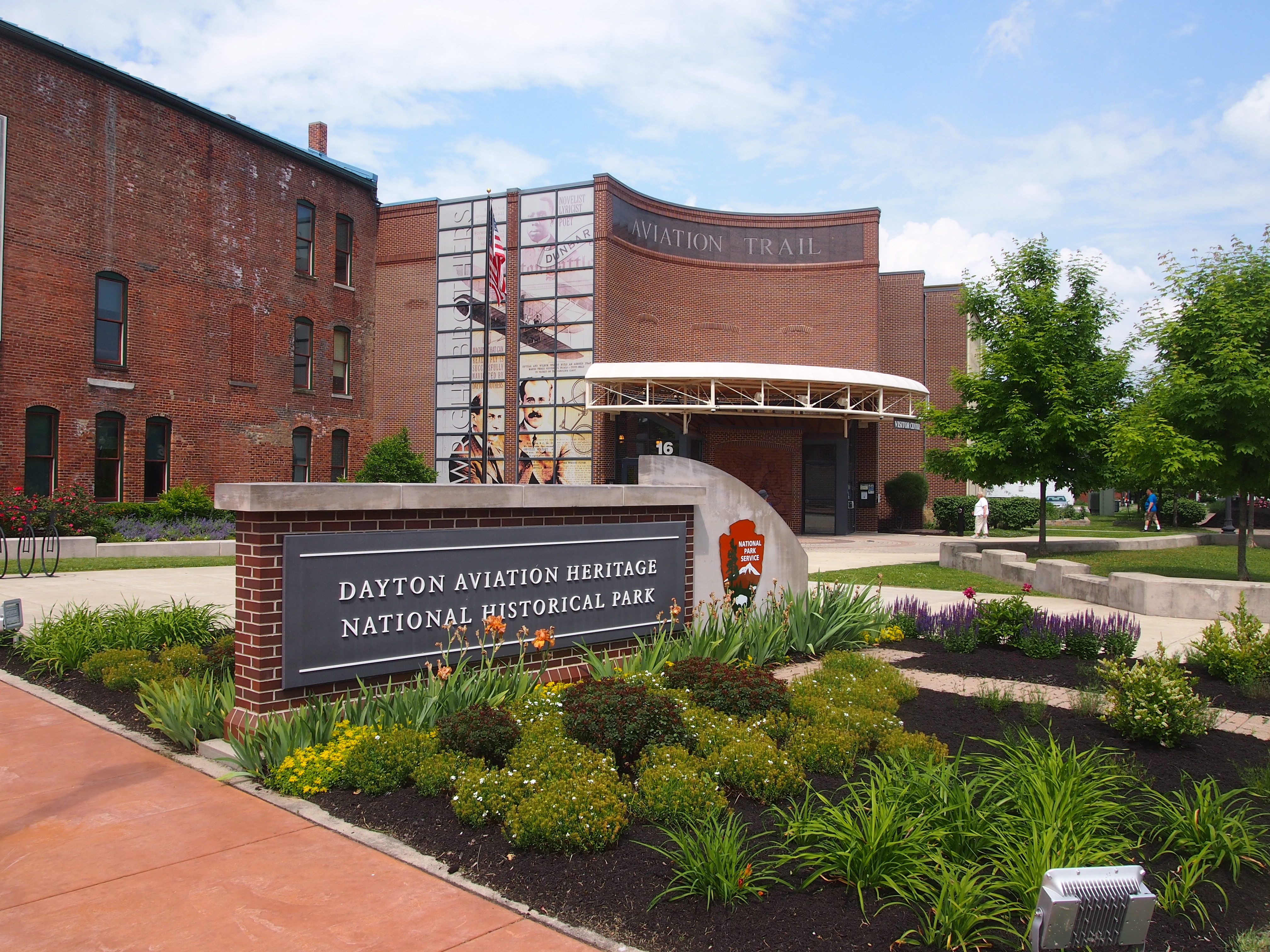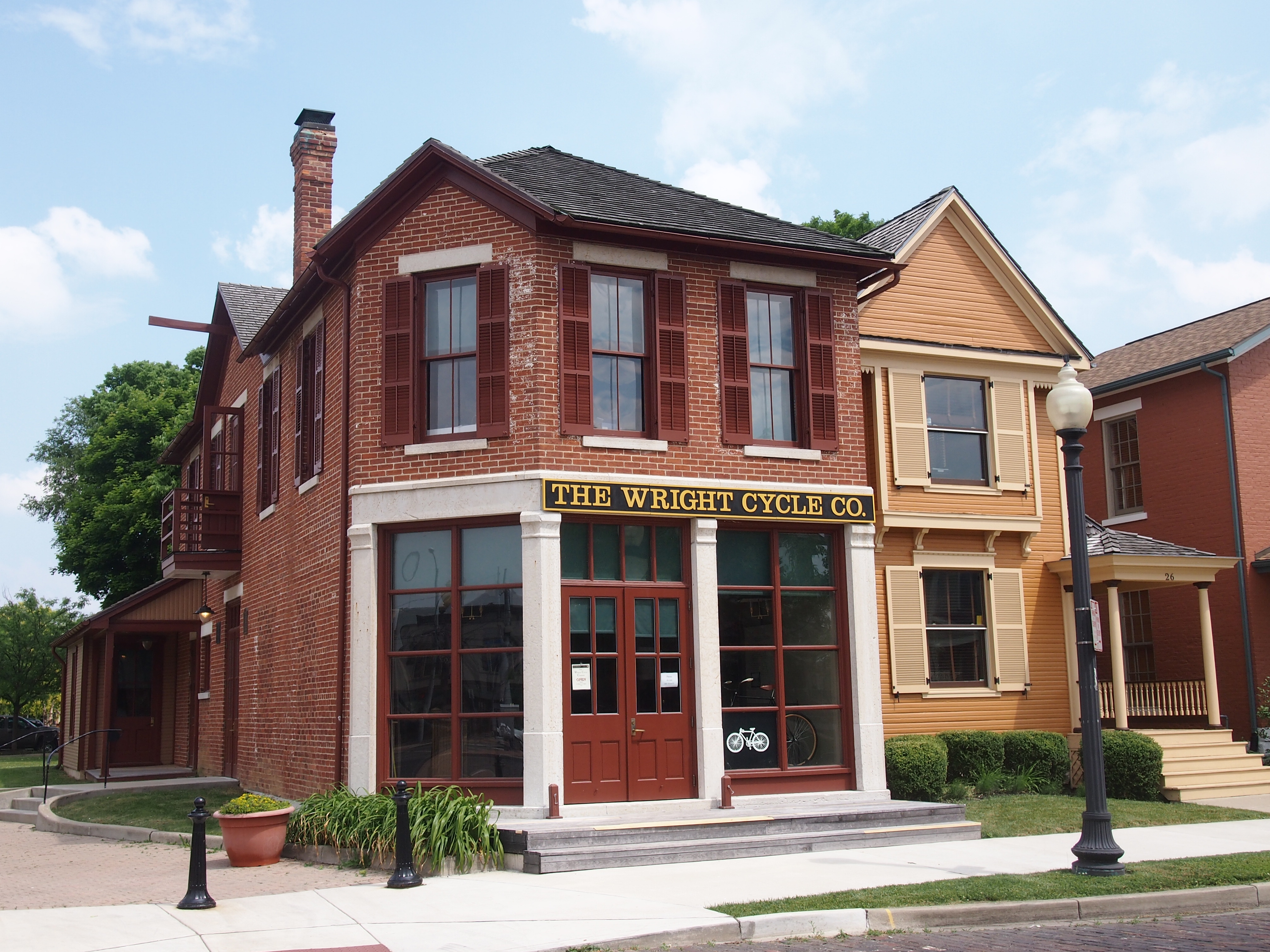In 2003, close to the occasion of the 100th anniversary of the Wrights’ first flight at Kitty Hawk, NC, Patrick Jonsson noted in the Christian Science Monitor that “the choice of location unwittingly sparked a quarrel over the genesis of manned flight: Was this barrier island near the town of Kitty Hawk merely a stepping-off point for an idea hatched in Ohio — or part of the very inspiration of flight?
“For its part, North Carolina boldly stated its claim a few years ago with license plates that boasted ‘First in Flight.’ It was followed by Ohio’s ‘Birthplace of Aviation’ claim a few years later. And in the late 1990s, North Carolina again moved first to put the flyer on its state quarter, taking a lot of oomph out of Ohio’s ‘Pioneers of Flight’ motto.
“But in the 100th year of flight both states have put rivalry aside, realizing the skies could not have been cleaved without the benefits of both locales.
” ‘In Dayton, they proved that powered flight was practical; at Kitty Hawk, they proved that it was possible,’ says Bob Petersen, a park ranger at the Dayton Aviation Heritage National Historical Park.”
The national historical park is scattered around greater Dayton, including a Wright Brothers-Paul Dunbar museum (pictured below) along with one of the brothers’ bicycle shops; the Huffman Prairie Flying Field; an aviation exhibit at a open air museum in Dayton; Paul Laurence Dunbar’s house; and Orville’s mansion after aviation made him wealthy. We only had time and energy for the Wright-Dunbar museum and the Wright bicycle shop, which are on Williams St. west of downtown Dayton.
 The focus of the museum, at least when it comes to the Wrights, is less about them as aviators, and more about their pre-Flyer lives growing up in Dayton, including other members of their family that aren’t well known, such as sister Katharine and brother Lorin.
The focus of the museum, at least when it comes to the Wrights, is less about them as aviators, and more about their pre-Flyer lives growing up in Dayton, including other members of their family that aren’t well known, such as sister Katharine and brother Lorin.
Paul Laurence Dunbar’s exhibits were interesting mainly because I didn’t know much about him. Seems like he had a fine ear for verse, and literary success in spite of the misery of being a black man in the 1890s. He’s also called an influence on Langston Hughes. I’m no expert, but after reading some of Dunbar’s poems, I can see the point.
This is the debt I pay
Just for one riotous day,
Years of regret and grief,
Sorrow without relief.
Pay it I will to the end
Until the grave, my friend,
Gives me a true release
Gives me the clasp of peace.
Slight was the thing I bought,
Small was the debt I thought,
Poor was the loan at best
God! but the interest!
— “The Debt,” by Paul Laurence Dunbar
The museum also features exhibits about the Wright printing business and then their bicycle shops. Lest we forget, the nation was in the grip of a bicycle craze in the 1890s, and for good reason: in a world of horse-drawn vehicles, it was a great new way to get around.
The re-created bicycle shop is next to the Wright-Dunbar museum, in the original building, which just barely escaped demolition.
 It’s the only Wright bicycle shop location left in Dayton. Another one — they operated more than one over their career in bicycles — is now at Greenfield Village in Michigan, and the sites of one or two more have been demolished in the last 100-plus years.
It’s the only Wright bicycle shop location left in Dayton. Another one — they operated more than one over their career in bicycles — is now at Greenfield Village in Michigan, and the sites of one or two more have been demolished in the last 100-plus years.
Inside are artifacts such as bicycles and a lot of bicycle parts, photos, and more. Remarkable how familiar an early safety bicycle looks. Basic bike design hasn’t changed that much.